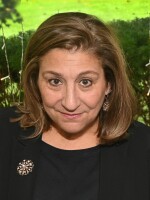Federal , state, and local officials gathered Tuesday afternoon at a ceremonial groundbreaking for a power plant on the site of the proposed National Bio and Agro-Defense Facility in Manhattan, Kansas.
The so-called Central Utility Plant is Phase 2 of the Department of Homeland Security project - a high level bio-containment animal disease lab that will studying emerging and foreign animal diseases.
Congress allocated $40 million for the power plant in 2011.
Kansas Senators Pat Roberts and Jerry Moran joined Congressmen Lynn Jenkins and Tim Huelskamp in thanking state officials for pushing the project in Topeka.
Gov. Brownback, in turn, praised federal officials for efforts to secure funding in Washington. But funding has not come easily, and is still far from certain.
The President requested $714 million for NBAF in the federal FY2014 budget, but the House recently shaved the amount down to just over $400 million.
In Topeka, the legislature approved $202 million in new bonds, on top $105 million already allocated.
Before approving the funds, legislators insisted on a proviso to the bill making explicit that this was the end of the state’s financial commitment to the federal project.
The 48-acre site, on the campus of Kansas State University, has been cleared for more than a year. Soon it will once again be an active construction site, at least for now.
DHS spokesman Jamie Johnson says the lab should be done within the year, and construction of the lab to begin not long after that.





